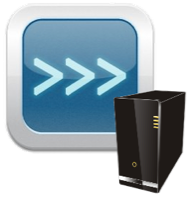Making HR Smarter
29 Apr 2014“Change is the only constant.” - Heraclitus of Ephesus
Change. It’s happening all the time, everywhere we look. In order to survive we need to adapt to the changes. In order to prosper we need to drive the changes. We need to constantly strive to improve and be smarter about what we do and how we do it.
In terms of technology the pace is particularly rapid. The use of cloud computing is pervasive and allows you to move your processing into amorphous collections of servers housed in data centres located around the globe. Big data is out there and when analysed properly can give you incredible insights into what’s really happening in the world. Mobile access is the norm and everyone now expects to be productive anywhere, at any time using whatever device they have to hand. So how can HR professionals get smarter about this?
There’s obviously a lot of technology out there that can be applied to today’s HR challenges and help make people’s lives easier. Trying to keep up with what is available can be particularly difficult for busy HR professionals, but to a large extent that’s why specialist organisations, such as ROC, exist. We are constantly examining the sorts of HR challenges organisations are facing and making sense of what solutions are out there by filtering out all the “noise” to find the technologies that can really make a difference. So what characteristics are we looking for in these solutions?
Things that are simple
Almost every solution out there worth considering is inherently complex. The demands on what we want from technology continue to grow, but at the same time we look for technology that has an element of simplicity; solutions that are relatively easy to use, implement and maintain. If a solution is too difficult to use, it will get no traction in the business meaning the investment is wasted. Too difficult to implement and/or maintain, will lead to the solution being prohibitive in terms of total cost of ownership.
Things that increase productivity
If a solution is to have a good return on investment it needs to enable you to do one of two things. Either it should allow you to do something you couldn’t do before or it should allow you to improve the way you are doing something. For HR this inevitably ties back to productivity. The solutions that are most successful allow employees to accomplish more in the time they have available. This could be solutions that allow actions to be automated or processed at scale (e.g. pushing data to multiple HR systems across geographies), or to allow business activities to be carried out when it would have previously been impossible (e.g. instant submission of expense claims and receipts).
Things that solve a real business problem
In all cases, solutions should resolve a business problem. If there is no problem then quite simply there is no driver to implement and use a piece of technology. Simply because a technology is new and amazing it does not necessarily follow that it will be the most appropriate solution for everyone.
One of the biggest influences we’ve seen recently around working smarter is the aptly named smartphone. Whilst they actually started appearing in the 90’s it was during the late 2000’s that the rate of adoption into more mainstream use really gained momentum. Smartphones gave people a significant jump in combined connectivity and computing; a perfect combination for increased productivity.
By 2012, there were 1.13 Bn smartphone users in the world and this is set to rise to 1.75 Bn in 2014 and an estimated 2.5 Bn in 2017. Source: emarketer, Dec 2013.
Today significant proportions of the population use a smartphone and because it is the device you always have with you it is the fall back option for anyone on the go. Be it a commute, an on-site client visit or even just navigating the corridors of the office, the smartphone allows people quick and convenient access to information.
Whilst many people use their smartphone for accessing social media, e-mail, cinema listings, maps, etc. there are many options for using smartphones in a business focussed way - particularly with the introduction of BYOD (Bring Your Own Device) policies. Providing mobile access to HR information and processes for HR professionals, managers and even employees can have significant productivity benefits such as reducing the numbers of HR queries and faster turnarounds on HR processes requiring approvals. Many organisations for example find that leave requests make up the majority of their HR processes requiring approval. In one case where a client has implemented a ROC solution for a wide range of processes, leave requests still accounted for over 85% of the submissions. Imagine how your organisation would be affected if you were able to do something like mobile enabling approval processes like leave requests.
Mobile, ubiquitous access to information is no longer the future, it’s the present. So if you haven’t already made plans to incorporate mobility into your HR solution choices make the smart choice. Identify the processes and information bottlenecks that are constricting the growth and productivity of your organisation and then find solutions that will put the power back (literally) into the hands of your employees.
The MRI image is used under the Creative Commons Attribution-Share Alike 2.0 Generic license. Originally posted to Flickr by everyone’s idle.
 Scroll the menu to find all the places to visit
Scroll the menu to find all the places to visit


